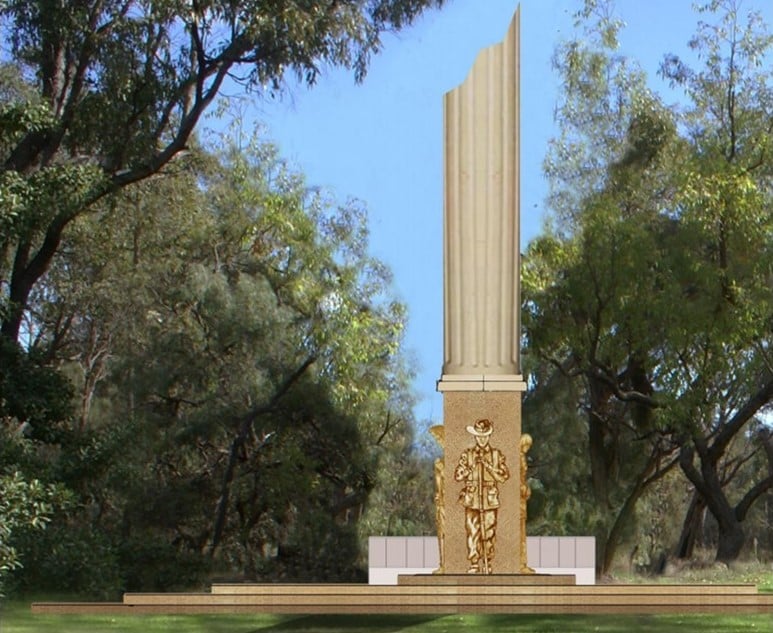
Work on the Battle of Crete Memorial at Kings Park in Perth, Western Australia is underway after many years of planning, negotiating, and fundraising.
Battle of Crete Memorial in Australia to Be Unveiled Later This Year
When complete, the memorial will be the first monument in Australia to be dedicated solely to the Battle of Crete. The official date of unveiling is May 11th of this year. This will take place in the presence of the memorial’s two co-patrons, Archbishop Makarios of Australia and Richard Sandover.
The memorial is being built to acknowledge the courage, sacrifice, and commitment of the Australians and Greeks who served in the Battle of Crete.
The construction was made possible through the support of federal and state funding, as well as individual donors. According to a Facebook post by the Battle of Crete Memorial Committee of WA, the campaign on Crete was of particular significance to Western Australians because it involved HMAS Perth and the City of Perth 2/11th Battalion.
What Happened During This Part of World War II?
The Battle of Crete was a significant attempt by the Axis powers’ airborne and amphibious military units to capture the island of Crete during World War II.
It began on the morning of May 20, 1941, when multiple German aircraft landed on Crete. Greek and other Allied forces, as well as Cretan civilians, managed to defend the island, and after just one day of conflict, the Germans had suffered heavy losses, leading the Allied forces to believe they would fend off the invasion.
The Cretans—who only four decades earlier had fought for and attained their independence after 250 years of Ottoman occupation—came out of their homes and challenged Hitler’s forces using whatever weaponry they had at their disposal. It was the first time the Germans had encountered significant opposition from a local population.
However, the following day, due to communication failures, Allied forces’ strategical hesitation and a strong German offensive, Maleme Airfield in western Crete fell, which enabled the Germans to bring in reinforcements and overwhelm the defensive posts on the north of the island.
Allied forces were driven to the south coast and more than half were evacuated by the British Royal Navy, while the remainder surrendered or joined the Cretan resistance.
Defensive operations grew into a costly naval engagement, with the Royal Navy’s Eastern Mediterranean strength having been reduced to just two battleships and three cruisers by the time the fighting was over.
The Battle of Crete was the first time that German paratroopers were used in large numbers, the first predominantly airborne invasion in military history, the first time the Allies utilized intelligence from decrypted German messages using the Enigma machine, and the first time German troops were met by mass resistance from a civilian population.
After this battle, due to the number of casualties and his belief that German airborne forces no longer had the advantage of surprise, Adolf Hitler became reluctant to carry out more large airborne operations, preferring to employ paratroopers as ground troops instead.
See all the latest news from Greece and the world at Greekreporter.com. Contact our newsroom to report an update or send your story, photos and videos. Follow GR on Google News and subscribe here to our daily email!



